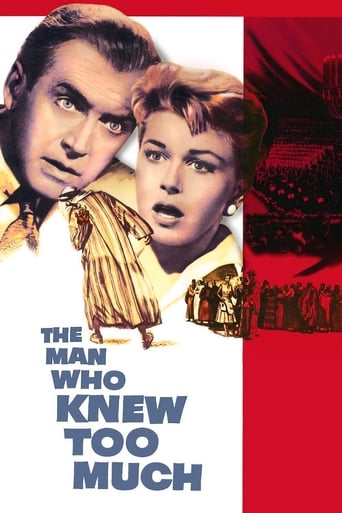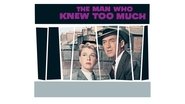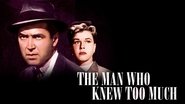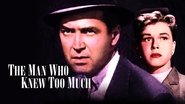streetlight2
Not sure what Hitchcock film is worse than this monstrosity. Dorris Day is miscast and the boy is obnoxious.
JohnHowardReid
Director: ALFRED HITCHCOCK. Screenplay: John Michael Hayes. In VistaVision and Technicolor. Photography: Robert Burks. Film editor: George Tomasini. Music: Bernard Herrmann. "Storm Cloud Cantata" by Arthur Benjamin and D.B. Wyndham Lewis. Songs by Jay Livingston and Ray Evans. Art directors: Hal Pereira, Henry Bumstead. Set decorators: Sam Comer, Arthur Krams. Costumes designed by Edith Head. Make-up: Wally Westmore. Assistant director: Howard Joslin. Sound recording: Paul Franz, Gene Garvin. Associate producer: Herbert Coleman. Producer: Alfred Hitchcock. Universal DVD rates 9/10.Copyright 1955, renewed 1983 by Samuel, Inc. New York opening at the Paramount: 16 May 1956. U.K. release: 30 July 1956. Australian release: 3 August 1956. Sydney run at the Prince Edward (9 weeks). 120 minutes.SYNOPSIS: In order to ensure the parents' silence, spies kidnap a child.COMMENT: Which version do you prefer? I'm going to make myself unpopular by saluting the 1934 film which—once the action moves to London—has an alarmingly gritty feel to it, a realistic atmosphere that transcends all the otherwise transparent plot devices to make the story chillingly suspenseful. I'm inclined to echo the ecstatic reviews accorded "The Man" by the New York press of March, 1935. The movie is short, sharp, cogent, powerful, with stand-out performances from Edna Best, Peter Lorre, Frank Vosper, Cicely Oates, Henry Oscar, and in a brief part (and his only English-language movie), Pierre Fresnay. Oddly, Hitch has no cameo in this version, but executive producer Balcon is briefly on-screen instead. He's the patron wearing glasses sitting behind the intended victim at Albert Hall. By contrast, this re-make often seems overblown and oddly, equally synthetic in its opening scenes. Although it runs much longer than the original, it has less action and its villains simply don't stand comparison, despite the sterling efforts of Miles and de Banzie.Carelessly dubbed Gelin and obvious padding with Mowbray and Brooke are likewise big drawbacks. However, this version does build to a more extended, more potent Albert Hall climax, and also revels in superior production values.
frankwiener
I was shocked and disappointed by the many negative reactions among the recent user reviews of this film, Hitchcock's only remake of one of his own works. No film is perfect and many successful suspense movies have holes in their plots, as this one does, but these lapses had no impact on my overall appreciation for this one-of-a-kind remake. I liked the original version as well, which featured an unforgettable female protagonist, played by Edna Best, who was a sharp shooter rather than a professional singer, and an early setting in Switzerland rather than Morocco. One reviewer here went so far as to claim that the first half of this version was NOT produced on location in Morocco. Then where was the first half filmed? Dearborn, Michigan?In spite of several plot holes and a generally weak, if not lame, script, the excellent direction, the solid camera work, the fascinating location scenes in both Marrakech and in London, and the wonderful work by leads James Stewart and Doris Day overcome all of the obvious weaknesses. Stewart's performance alone is worth watching as he runs the entire gamut of emotions from start to finish. His awkwardness and physical discomfort at the Moroccan restaurant, and the gradual discovery that his son has been kidnapped are examples of his very natural and superb acting. The scene in the taxidermy shop was hilarious. Remember the stuffed birds in the office of Norman Bates? Very Hitchcockian, eh? Hitchcock picked Day for the role of Jo McKenna when he saw her in "Storm Warning", one of her few dramatic roles. Considering her good work in both dramas and in films such as "Love Me Or Leave Me", it's a pity that she didn't appear in more substantial films. As much as I love her, many of her films were just plain silly, and she clearly had much more potential than most of the nonsensical work that had been thrown at her. Jo's anguished reaction to son Hank's kidnapping was quite convincing. In real life, Day decided to commit herself to the cause of animal welfare when she observed how cruelly the animals were treated on the Moroccan set of this film. Among the plot lapses was the McKennas' decision to leave Hank with strangers in a totally unfamiliar and foreign place such as Marrakech, Morocco. I was seven years old in 1956, and my parents would have never done that even during those far more innocent times and in far more familiar locales. I also didn't understand why the thugs didn't decide to kill Ben McKenna after the worshipers left the chapel. If the object of the kidnapping was to make sure that Ben wouldn't reveal the assassination plot, their problem would have been instantly solved, and they were certainly ruthless enough to knock him off right then and there. Then came "Que Sera Sera", a song that I detest, and if that didn't ruin the film, nothing else could, including twelve, long minutes of a lackluster classical piece at Albert Hall that should have been shortened significantly. As to Bernard Herrmann's musical score, it sounds very similar to his music in Hitchcock's other classics "North By Northwest" and "Vertigo" with very little variation. Speaking of "Vertigo", does Miss Day's gray suit look at all familiar to you? And I am sorry that I missed the director's trademark cameo appearance at the market in Marrakech, but I'll try again during the next viewing, and there surely will be another opportunity because, regardless of its many imperfections, I still love this movie as well as the original 1934 version.
alexanderdavies-99382
I'm not quite sure why Alfred Hitchcock remade his classic film "The Man Who Knew Too Much." The 1934 version is an absolute joy from beginning to end and I wouldn't change anything about it. The 1956 version is rather slow in places and is too long. I can understand why it is enjoyed, seeing as the film has James Stewart and Doris Day involved. I don't dislike the 1956 version at all but it can't maintain the suspense. There are some boring bits which could have been edited before release. The opening of the above version is set in North Africa instead of in Switzerland and there is a lot more in the way of location shooting. I thought it a good idea to base and shoot some of the film in London. James Stewart and Doris Day are good as the parents who frantically search for their captured son after stumbling onto a sinister plot to assassinate a visiting diplomatic. I did enjoy the climax of this version though, it is good.














